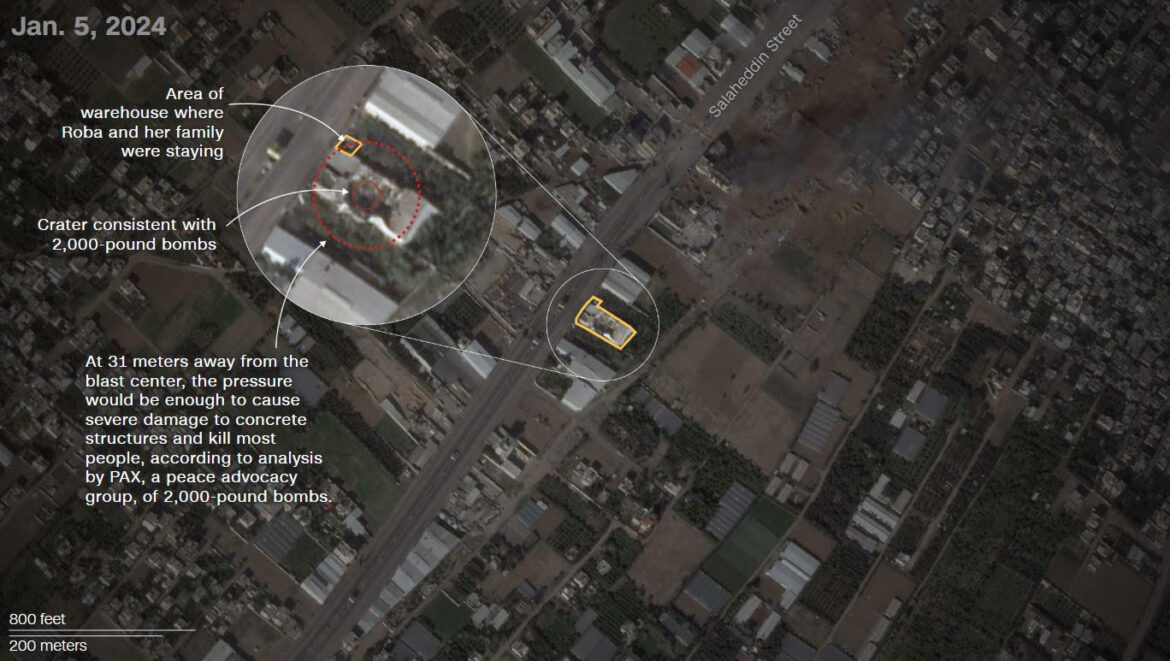The right side of Roba Abu Jibba’s face is almost completely gone – a deep, bloody wound is where her eye should be.
The 18-year-old, confused and in pain, lies on a gurney in Al-Aqsa Martyrs Hospital in central Gaza. She tries to explain how she got there. She had been sheltering with her family for two months in an industrial warehouse on Salaheddin Street, the strip’s main north-south highway, she explains, when they came under heavy fire from the Israeli military.
In a whisper, she recalls being shot at, explosions and bulldozing. She says she watched her brothers and sisters die around her. Her mother and three of her siblings were able to flee, but she’s not sure where they went.
After a chance encounter and the discovery of Roba’s identification card under rubble, a weeks-long CNN investigation led by CNN International Correspondent Jomana Karadsheh has been able to piece together in unprecedented detail what happened during this one terrifying night in early January, which left five of her siblings dead.
Their story offers a window into the Israeli military’s overwhelming and often indiscriminate use of force in areas where civilians were told they would be safe, helping to uncover an atrocity that would otherwise have remained hidden.
CNN interviewed seven eyewitnesses to this particular attack, tracking down relatives now scattered across the enclave. Their testimonies were cross-referenced with hospital records, satellite imagery and dozens of videos and photos from the scene, reviewed by forensics and ballistic experts, who analyzed the damage to the building and injuries of the people found inside of it.
Taken together, the evidence reveals how the Abu Jibbas came under attack by Israeli forces without advance warning. It also suggests that some were killed by a massive bomb.
The Israel Defense Forces (IDF) told CNN they were responding to enemy fire from the warehouse. One eyewitness said he heard what he called “resistance fire,” referring to fire from Hamas or another militant group, and local journalists reported “clashes” in the area that day. Eyewitnesses said there were no militants inside the warehouses where they were sheltering, and that they weren’t aware of Hamas operating in the area.
Salaheddin Street, where this warehouse was situated, had been designated a safe corridor by the Israeli military.
“There was a man we didn’t know, who welcomed us and allowed our family to stay there. People were living in the warehouses,” Sumaya, Roba’s mother, told CNN. “No one dropped any leaflets asking us to evacuate or anything.”
The families, she said, put up white flags – a universal sign of surrender – to indicate there were civilians there. She recounted that they wrote “displaced families” on the building.
CNN tracked down the owners of the warehouses where the Abu Jibba family was staying and another that hosted civilians across the street. Both said people from northern Gaza were living there for about two months before the attack.
Israeli drones and planes were constantly flying overheard, monitoring the area, Sumaya said. “They could see us. It was an open area, it was an open land, we would start fires and cook and bake bread… they knew it’s civilians.”


